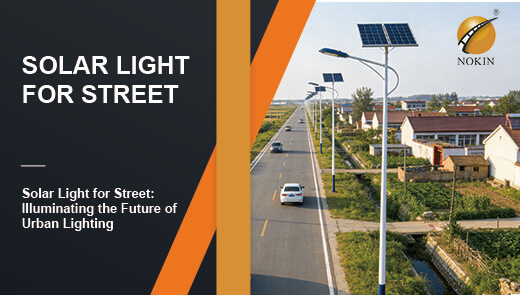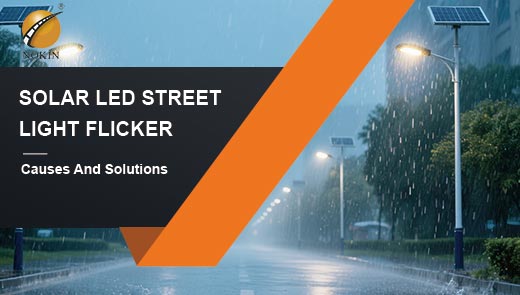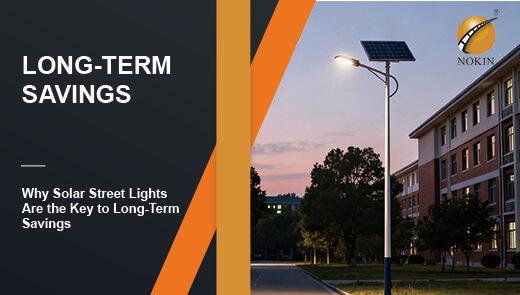LED Street Lighting for Ports and Terminals
Ports and terminals serve as the lifelines of global trade, facilitating the seamless movement of goods across continents. However, their unique coastal environments and high-risk operational demands pose significant challenges for lighting systems. From corrosive marine conditions to the ever-present threat of explosions from hazardous materials, ensuring reliable, safe, and efficient illumination is non-negotiable. This article explores the critical requirements for port lighting and highlights why LED street lighting has emerged as the optimal solution to meet these complex challenges, balancing durability, safety, and sustainability in one cohesive system.

Lighting for Ports and Terminals
Environmental Challenges
Ports are uniquely situated along the coast and are exposed to the marine environment for long periods of time. Luminaires here are subjected to harsh natural conditions similar to those found in offshore applications. Salt spray corrosion, humid air intrusion, etc. can have a serious impact on the performance and service life of luminaires. According to statistics, the average lifespan of ordinary lighting equipment in the marine environment will be shortened by 40% - 50%.
Explosion Risk from Hazardous Substances
As the core hub of import and export trade, major ports have a large number of hazardous substances traveling to and from or stored in them every day. Flammable and explosive products such as oil and natural gas, as well as bulk grains and other goods that are also at risk of explosion, can easily lead to catastrophic accidents once they encounter an ignition source during loading, unloading and storage. Therefore, the provision of explosion-proof lighting equipment has become a necessary measure to ensure the safe handling and storage of hazardous materials in ports.
Typical Areas Around a Port Lighting
Docking areas
When oil tankers or cargo ships dock to unload cargo, the unloading process of crude oil, liquefied natural gas and other explosive substances makes the dock and its surrounding area a high-risk area. Due to the continuous nature of port operations, 24/7 operations require safe and efficient lighting systems to safeguard personnel and cargo.
Storage facilities
Tank farms and warehouses are an integral part of modern ports. Long-term storage of oil and gas, as well as the centralized stacking of bulk grain, requires explosion-proof certified lighting. These lights ensure the flexibility, functionality and safety of the storage areas and prevent accidents caused by lighting problems.
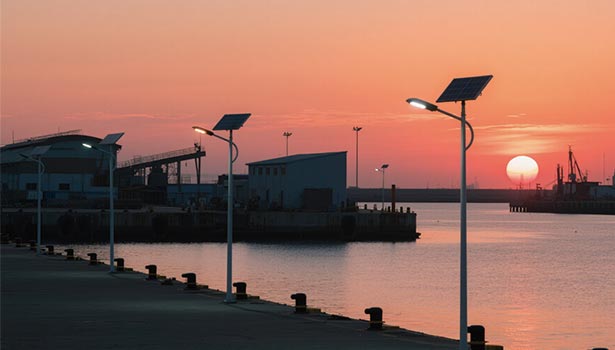
Core Requirements for Port Lighting
High Power
Port luminaires are often installed at heights of 25 - 50 meters and cover a wide range of areas, which requires high luminous power. Generally speaking, the power of port lighting fixtures needs to be more than 400W, in order to meet the large area, high intensity lighting needs. Take a large container terminal as an example, the vast loading and unloading area, yard are dependent on high-power lights and lanterns to provide sufficient light, to ensure that the staff to see the container loading and unloading, cargo stacking and other details of the operation, to avoid operating inefficiency due to insufficient light or safety accidents.
Long Life
Due to the high installation position of port lights and lanterns, maintenance is difficult and costly, not only requiring professional overhead equipment and personnel, and the process is time-consuming and labor-intensive. LED lights have become the ideal choice for port lighting with their long life span of 50,000 - 100,000 hours. Compared with traditional lights, LED lights significantly reduce the frequency of replacement, reduce maintenance costs and safety risks, and ensure the long-term stable operation of the lighting system.
Safe and Reliable
The complexity of harbor cargo and operating environment, potential risks, the lighting fixture safety requirements are extremely high. Reliable lights and lanterns need to have good electrical insulation to prevent leakage; strong shells to withstand the impact of external forces; and excellent heat dissipation performance to avoid overheating and fire, so as to operate stably in complex environments, and build a strong lighting safety defense for port operations.
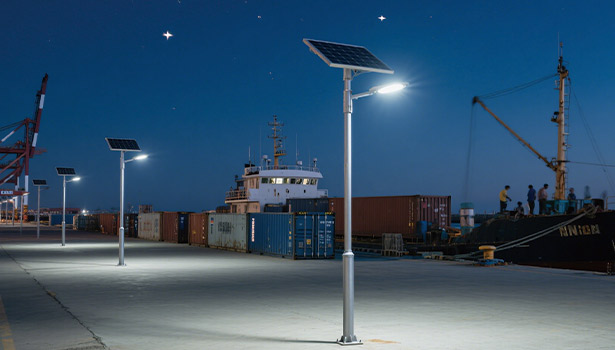
Requires Protection Level
Harbors are subject to long-term erosion by humid air and sea breeze, which requires strict protection level for lighting fixtures. Typically, protection levels of IP65 and above are required, i.e. fully dustproof and able to withstand low-pressure water jets from all directions. In addition, corrosion resistance tests, stainless steel and anti-corrosion coatings are used to prevent water vapor intrusion and extend the service life of the luminaire.
Good Light Transmission
Foggy harbors, especially at certain times of the day or under certain weather conditions, can seriously affect visibility. Good light transmission luminaire can effectively reduce the scattering and absorption of light by fog, and ensure that the light penetrates through the fog. Special optically designed lenses, lamp shades, and high light transmission housing materials provide clear visibility for operators even in foggy weather.
Good Color Rendering
The port has a large amount of goods, and when working at night, the poor color rendering of the lights can easily lead to distortion of the color of the goods and cause confusion. For example, goods of similar color may be mistakenly loaded due to inaccurate color rendering, affecting the use of subsequent transportation. Therefore, it is necessary to use lights with CRI (Color Rendering Index) of 80 or more to truly restore the color of the cargo and improve the accuracy and efficiency of the operation.
Windproof
Windy weather occurs frequently in ports, and the wind is even stronger during typhoon season, so lighting fixtures must have excellent windproof capability. With strong brackets, reinforced housings and optimized internal structures, the luminaires can withstand high wind loads, preventing deformation of the housings and loosening of the components, ensuring stable illumination in inclement weather, and safeguarding port operations from excessive weather interference.
Why Choose LED Street Lighting for Port?
Lifetime and Maintenance
LED street lighting has a long working time of over 100,000 hours, almost no need to replace bulbs, and only requires regular cleaning and inspection. Traditional lighting equipment, on the other hand, has an operating time of 10,000 - 20,000 hours and requires frequent bulb replacement. For ports operating 24 hours a day, most of the lights and lanterns are installed in high altitude areas, and when traditional lights and lanterns are replaced, professionals need to be dispatched to carry out high altitude operation, which not only has high labor costs, but also has greater safety risks, time and material costs should not be underestimated.
LED street lights, with their long lifespans, greatly reduce the frequency of replacement of lights and lanterns, and their modular design makes the maintenance work easier and more convenient, and can reduce the annual cost by about 20,000 to 20,000 hours, compared with traditional lights and lanterns. The modular design also makes maintenance work easier and more convenient. Compared with traditional lights, the annual maintenance expenditure can be reduced by about 60%, which is especially suitable for loading and unloading areas, stockyards and other hard-to-reach high-altitude areas.
Light Pollution
The light scattering problem of traditional lighting fixtures is prominent, often more than 30% of the light dispersed to non-operational areas, which not only results in an unwarranted waste of energy, but also negatively affects the surrounding ecological environment and the lives of residents, such as interfering with the normal work and rest of wildlife and affecting the residents' rest at night. The LED street light adopts directional light emitting technology, and through the precisely designed optical lens, it can project more than 90% of the light to the dock, warehouse and other areas that actually need to be illuminated, which significantly reduces the light pollution and helps the port to comply with the environmental protection regulations and realize the green and sustainable operation.
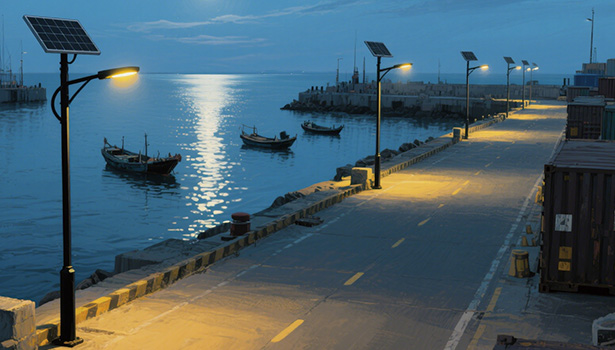
Light Quality
The color temperature of LED streetlights ranges from 2700K - 6500K, which can be flexibly adjusted according to the actual needs, providing a variety of lighting effects from warm white light to cool white light. At the same time, its color rendering index (CRI) reaches 80 and above, which can truly reproduce the color of objects. In contrast, traditional high-pressure sodium lights have a single and low color temperature of about 2000K and a color rendering index of only about 20 - 30, which can lead to serious distortion of the object's color.
In container sorting operations at ports, the use of high color rendering LED street lights enables staff to quickly identify cargo labels and clearly differentiate between different batches of goods. Compared to traditional lighting environments, the efficiency of the work can be increased by about 25%, effectively avoiding loading errors due to misjudgment of the color of the goods.
Energy Costs
Traditional lighting equipment needs to warm up when starting, in order to avoid damage caused by frequent switching, even in the case of no operation is often kept in a long state, resulting in a large amount of wasted energy. LED street lights with milliseconds instant start characteristics, with intelligent control system, to achieve “people come to light up, people go out of the light” of intelligent lighting mode. In actual application scenarios such as grain warehouses, the measured energy consumption of LED lights is only 40% of that of traditional lights, which not only saves a lot of costs for port operations, but also meets the national policy guidance of energy saving and emission reduction.
Convenient Maintenance and Fast Recovery
LED technology itself has the advantage of reducing maintenance costs, and reasonable lamp design can further enhance the convenience of maintenance. In the event of lamp failure, well-designed explosion-proof lights and lanterns can quickly restore the lighting, minimize downtime and protect the normal operation of the port.
Port and dock lighting has many special needs, the need for explosion-proof lighting can not be ignored, and LED street lights with its significant advantages, has become a quality choice for port lighting. Reasonable planning and installation of lighting systems can not only protect the safe operation of the port, but also improve operational efficiency and reduce costs. It is hoped that port managers can pay attention to the construction of the lighting system, choose the appropriate lighting solutions, and lay a solid foundation for the efficient and safe development of the port.

